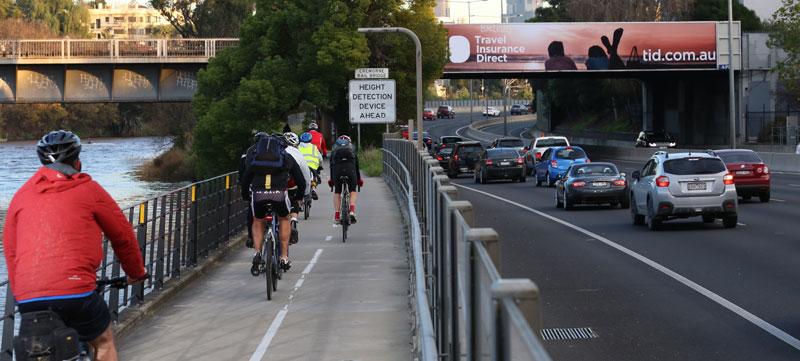
Are driverless vehicles, e-bikes and ride sharing the future of commuting?
The impact of innovation on the way we move around our cities
23 Sep 2021
As technological disruption of transportation gathers pace with the continued growth of ride-sharing, the expansion of electric cars and the inevitable arrival of autonomous vehicles, governments are grappling with how best to consider innovation in transport planning.
In this AHURI Brief, based on recent AHURI research, we examine how urban transport programs and policies across Australia are responding to changes and innovations in transport technologies, travel patterns and environmental requirements.
A focus on innovation
Focussing in particular on NSW, VIC and WA, the study observed that transport innovation is directed predominantly on current transport modes and on land-use planning to facilitate sustainable transport. Policies and planning tends to focus on:
- influencing travel behaviour—by seeking to lessen car dependency and creating measures to improve public transport in order to address declining use by this mode; and
- improving urban structures—seeking to develop activity centres that are integrated with transport to lessen commuting times and distances.
All three states are seeking to expand their public transport networks, particularly on new routes serving destinations outside the CBD. They also recognise the importance of supporting active modes of travel such as lanes and paths for cyclists and pedestrians. Other innovations are encouraging telecommuting and cover emerging transport modes: ride-hailing, car-sharing options, self-driving or autonomous vehicles (AVs) and Mobility as a Service (MaaS). MaaS consists of the whole suite of public and personal transport information and service options available being accessible to customers through a single digital platform (typically a smartphone app) with point of payment at use, either through membership subscription or one-off payments.
The research stresses that ‘the value of innovation is not only about newness and novelty as such, but the creation of new value propositions for regulators and providers’, meaning that innovation should help meet overarching policy goals such as reduced emissions and congestion; increased efficiency or productivity; and greater accessibility and social equity.
There are number of drivers of innovation FR360P3 including technology; social and environmental imperatives; demand behaviour, of markets or individuals; resource constraints (e.g. land, public and private capital); regulation; and political imperatives.
Balancing the innovation trade-offs
Australia’s transport policies will need to take into account many of these factors and to balance the competing outcomes of innovation. For example, the increase in electric vehicles will result in less air pollution and lower greenhouse gas emissions but governments will have a reduced income due to falling volumes of fuel taxes. As a consequence, do governments implement mileage taxes or charge more for parking? Electric micro-vehicles (e.g. e-bikes and e-scooters) also have the potential to disrupt government revenue from registered vehicles, with an American study showing e-scooter trips displaced trips otherwise taken by ride-hail services or taxis (39%), bus (7%) or by car (7%). [E-scooter trips also replaced trips on foot (33%) and bicycle (12%).]
Similarly, the growth in ride sharing platforms (e.g. Uber) will mean fewer people own a car so there will be reduced taxes from car sales, as well as reduced demand for paid car parking spots at airports, entertainment precincts and medical facilities. However, as more people choose the ease (and convenience) of using a ride sharing platform rather than walking, cycling or taking public transport the volume of car miles (and their pollution outputs) may actually increase.
The challenge of driverless vehicles
The future of policies around innovations for personal road transport (cars) and freight AVs are perhaps the most complex. These vehicles have the potential to provide time efficient, accessible transport for nearly everybody (including people with a disability) as well as challenge the legal system should the AVs be involved in a crash. There are questions of who is legally responsible for any accidents: the car’s software programmer? the car provider? the key passenger? There is also the moral question as to whether the car should prioritise saving the lives of the car’s passengers or other road users if a serious accident occurs.
AVs may also increase road congestions, with owners deciding that rather than paying for parking, they will send their cars home for parking or have them drive around (causing more congestions) until such time as the owners call for them to come and pick them up. Having access to convenient AVs may also reduce demand for public transport—which is a more energy and road space efficient way to move people through a city, albeit with a longer journey time.
Are we ready for the innovation age?
Ultimately the AHURI research found that the current ‘Australian urban transport sector lacks a coherent overarching framework for an innovation system... The principal approach is of market initiated innovation with regulatory anticipation and oversight at adoption.’
In contrast to the current situation, a more formal and explicit framework for an Australian transport system policy could have a much better chance of bringing together the ever developing and sometimes disparate parts of the transport universe.
